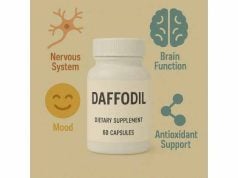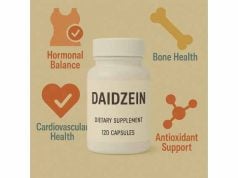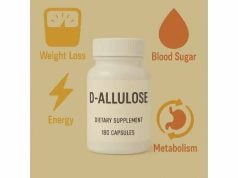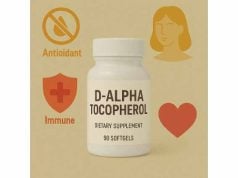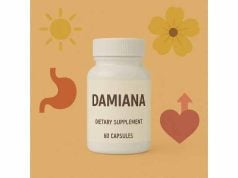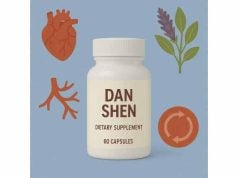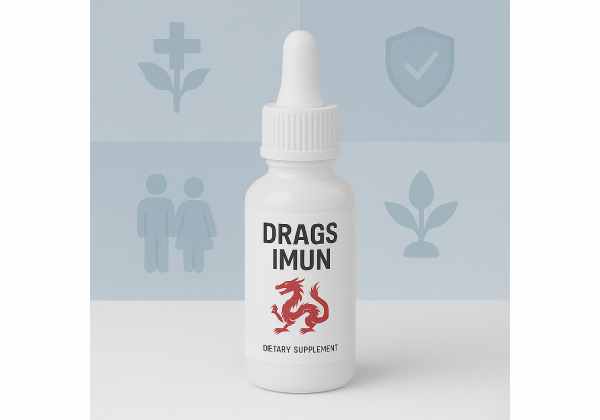
Drags Imun is a liquid extract made from the deep red latex of Croton lechleri, a South American tree often called “dragon’s blood.” Traditional communities have long used this resin for wound care and digestive complaints. Today, consumers take Drags Imun primarily for immune support, gut comfort, and to promote tissue repair. Laboratory studies highlight abundant polyphenols (especially proanthocyanidins) and the alkaloid taspine, which together may explain its astringent, antimicrobial, and wound-healing properties. A purified fraction of this resin—crofelemer—is even an FDA-approved drug for non-infectious diarrhea in adults with HIV, underscoring that certain components have clinically meaningful effects. Still, the supplement itself is not a cure-all. Below, you will find a practical, evidence-aware guide to what Drags Imun can and cannot do, how to use it, and who should avoid it.
Essential Insights for Drags Imun Users
- May support diarrhea control and gut comfort; purified crofelemer targets intestinal chloride channels.
- Topical use may speed minor wound recovery; a resin film forms a protective barrier.
- Typical label dosage: 10 drops 1–3 times daily (≈0.5–1.5 mL per day), diluted in water.
- Safety caveat: avoid with immunosuppressant medications; separate from new prescriptions by 2 hours.
- Not for pregnancy, breastfeeding, or children unless a clinician advises otherwise.
Table of Contents
- What is Drags Imun and how does it work?
- Evidence-backed benefits and limits
- How to use Drags Imun correctly
- How much to take per day?
- Side effects, interactions, and who should avoid
- What the evidence says and what to expect
What is Drags Imun and how does it work?
Drags Imun is a single-herb concentrate: the latex (resin sap) of Croton lechleri—a species native to the tropical forests of Central and South America. When the bark is cut, the tree exudes a thick, crimson sap rich in polyphenols (especially oligomeric proanthocyanidins) along with smaller amounts of alkaloids (notably taspine), lignans (e.g., 3′,4-O-dimethylcedrusin), and other secondary metabolites. These compounds are central to the product’s traditional and modern uses.
Two complementary mechanisms define how the resin is used:
- Topical astringent and barrier effect. The resin dries rapidly into a flexible, dark film. This “liquid bandage” supports hemostasis (stopping minor bleeding) and creates a temporary protective layer over superficial skin or mucosal injuries. The high tannin content can lightly contract tissues, which users often describe as an immediate “tightening” sensation. Taspine and related constituents have been investigated for their role in fibroblast migration and early wound-healing phases, helping explain the historical use on cuts, abrasions, and after dental procedures.
- Gastrointestinal anti-secretory action (by purified fraction). While Drags Imun itself is a whole-resin supplement, one of its standardized derivatives—crofelemer—illustrates a well-characterized mechanism in the intestine. Crofelemer inhibits two chloride channels (CFTR and CaCC) in the gut lining. By reducing chloride and water secretion into the intestinal lumen, it helps control secretory diarrhea. Crofelemer’s clinical approval for non-infectious diarrhea in adults with HIV demonstrates that specific constituents of C. lechleri resin can translate to reliable, safe human effects when standardized and dosed precisely.
Important distinction: Drags Imun (whole resin) and crofelemer (purified drug) are not interchangeable. The supplement contains a broader, variable matrix of plant compounds; the drug contains defined oligomeric proanthocyanidins with established pharmacology, dose, and safety monitoring. The supplement’s traditional benefits likely relate to its astringent/film-forming properties and polyphenol content, but its effects are less standardized than the prescription extract.
What else is inside? Beyond proanthocyanidins and taspine, analytical work shows a diverse polyphenol profile that includes catechin, epicatechin, and other flavan-3-ols. These compounds contribute antioxidant capacity and may modulate local inflammatory responses. The precise “active” ingredient is best thought of as a synergy of constituents, with the caveat that composition varies by tree part, geography, and processing method—one reason label-guided use and realistic expectations are essential.
In short, Drags Imun is a traditional resin concentrate with modern interest: a topical film-former for minor wound care and an oral supplement sought for gut comfort, with its best-characterized pharmacology demonstrated by crofelemer’s anti-secretory action in the clinic.
Evidence-backed benefits and limits
When evaluating Drags Imun, it helps to separate what is established in humans from what is promising but preliminary.
Most established (human evidence):
- Diarrhea control via crofelemer (purified fraction). Crofelemer—derived from C. lechleri latex—has been shown to reduce non-infectious diarrhea in adults with HIV on antiretroviral therapy and is approved in the U.S. for that indication. It works locally in the gut by inhibiting CFTR and CaCC chloride channels, thus decreasing water secretion into the intestines. Although this demonstrates that a resin component has clear clinical utility, crofelemer is a standardized drug, not the same as taking crude resin drops. Still, many users view the supplement as “in the same family,” seeking milder, diet-adjacent support for loose stools.
- Topical support for minor wound healing. In a randomized, double-blind, placebo-controlled clinical trial, a dragon’s blood cream (containing C. lechleri extract) accelerated the healing of small skin wounds after skin-tag removal, with measurable improvements by day 3 and significantly faster closure overall. This aligns with a long ethnomedicinal history and mechanistic data on fibroblast migration and collagen dynamics.
Encouraging but early or indirect:
- Chemotherapy-induced diarrhea prophylaxis (crofelemer). An open-label phase II trial in HER2-positive breast cancer found crofelemer reduced the incidence and severity of diarrhea in certain cycles compared with usual care, despite a nonsignificant primary endpoint. This suggests potential in oncology settings, but larger confirmatory trials are needed and, again, this pertains to the drug, not the supplement.
- General antimicrobial and anti-inflammatory effects (preclinical). Across in vitro and animal studies, extracts from C. lechleri show antiviral, antibacterial, and anti-inflammatory activities, and robust antioxidant capacity largely attributed to proanthocyanidins. While mechanistically plausible, translation to clinical outcomes for the dietary supplement remains limited.
Where claims commonly outpace data:
- Broad “immune boosting,” chronic disease modification, and systemic anti-cancer effects. Laboratory and ethnomedicinal reports are not substitutes for controlled human trials. No high-quality human evidence currently supports Drags Imun as a stand-alone treatment for chronic inflammatory diseases, serious infections, or cancer.
Takeaway: The strongest human signal connected to C. lechleri latex is diarrhea control by crofelemer (a purified derivative) and topical wound-healing support for minor injuries. For other uses, the supplement should be considered adjunctive and experimental. If you choose to use Drags Imun, align expectations with its evidence tier: topical help and gentle GI support are realistic; sweeping systemic effects are not.
How to use Drags Imun correctly
Before you begin
- Identify your goal. Drags Imun is most practically used for short-term gut support (loose stools of non-infectious origin, mild digestive discomfort) and minor topical uses (small cuts, abrasions, or post-procedure skin where your clinician says topical film-forming is appropriate).
- Check medications and conditions. Because the product is a resin concentrate with immune-modulating and astringent properties, avoid if you take immunosuppressants (e.g., after transplant, for autoimmune disease) unless your specialist advises otherwise. If you are pregnant, breastfeeding, or plan to give it to a child, skip it unless your clinician recommends it.
- Decide on a duration. Many labels suggest three weeks on, one week off as a pragmatic cycle when used for general support. For truly acute issues (e.g., traveler’s loose stools without alarm features), people often trial it for several days and reassess.
Oral use (general practices)
- Dilute the drops. Place the measured drops in half a glass of water; swirl and drink after food. This eases the resin’s strong taste and reduces stomach irritation.
- Start low, adjust slowly. If you are new to astringent herbal resins, begin with the lowest label dose once daily for two days to gauge tolerance, then increase to the usual schedule if needed.
- Separate from sensitive medications. Because polyphenol-rich, tannin-containing botanicals can bind or chelate compounds, take Drags Imun at least two hours apart from new prescriptions, iron, or mineral supplements, unless your clinician says otherwise.
- Hydrate. Resin astringency plus any mild GI changes can be dehydrating. Aim for an extra glass or two of water daily while using it.
Topical use (minor, unbroken skin or clinician-approved sites)
- Clean first. Rinse gently with clean water, pat dry.
- Apply a thin layer. A few drops spread with a clean cotton swab form a fast-drying protective film. Reapply 1–2 times daily as directed.
- Patch test. If you have a history of sensitive skin or plant latex allergies, test on a small area first and monitor for 24 hours.
- Avoid deep or infected wounds. Do not seal over puncture wounds, deep lacerations, or obviously infected areas; seek medical care.
Dental and throat care (as permitted by your dentist or clinician)
- Gargle: Add 3–5 drops to a glass of water and gargle briefly for oral/throat comfort. Spit out.
- Gums: Some users place a drop on a toothbrush for bleeding gums; consult your dentist first, especially if you have periodontal disease or recent oral surgery.
When to stop or escalate care
- Stop if you develop persistent abdominal pain, fever, blood in stool, black tarry stools, or worsening diarrhea.
- Seek care if diarrhea lasts more than 48 hours, if you become dehydrated, or if you have high-risk conditions (frail adults, significant comorbidities, recent antibiotics, or travel exposure).
Used thoughtfully—short-term, label-guided, goal-oriented—Drags Imun can fit into a broader self-care plan for minor digestive or topical needs, with clear boundaries for when to get medical help.
How much to take per day?
Label-style guidance (drops):
- Standard daily range: 10 drops, 1–3 times daily diluted in water after meals. That equals roughly 0.5–1.5 mL per day (about 10 drops ≈ 0.5 mL).
- Short-term “acute” template sometimes used: up to 9 drops, three times daily for a few days, then transition to standard dosing if needed.
- Cyclical use: a common pattern is 3 weeks on, 1 week off, then reassess.
These instructions reflect how dragon’s blood resin concentrates are typically packaged and used in Europe. They’re meant for otherwise healthy adults addressing non-alarming symptoms.
Topical amounts:
- Apply just enough to form a thin film over a small, clean area—usually a few drops per application. Reapply once or twice daily as the film wears off.
Mouth and throat use:
- Gargle: 3–5 drops in a glass of water; swish or gargle for 20–30 seconds and spit.
- Toothbrush: A tiny drop on bristles for bleeding gums (only if your dentist agrees).
What not to do:
- Do not exceed your bottle’s recommended maximum daily dose without clinician input.
- Do not combine with immunosuppressants (e.g., tacrolimus, cyclosporine, biologics) unless your specialist approves.
- Do not use during pregnancy, breastfeeding, or in children unless a clinician specifically recommends it.
About crofelemer (the prescription drug):
- If your clinician is treating non-infectious diarrhea in adults with HIV, the approved dose of crofelemer is 125 mg twice daily (tablets). This is not a substitute for Drags Imun dosing; it’s included here so readers understand the standardized, clinically proven derivative and its distinct regimen.
Practical timing tips:
- Take drops after food to reduce queasiness.
- Space by two hours from new medications and mineral supplements to avoid potential binding by tannins.
- Track your daily total and symptom changes for one to two weeks; if nothing changes, discontinue and consult a professional rather than escalating doses.
Side effects, interactions, and who should avoid
Typical tolerability: Dragon’s blood latex is generally well tolerated in small clinical studies and traditional use. Reported side effects are usually mild and self-limited, including a bitter taste, mild nausea, or transient loose stools in some users when taken orally. Topical application can cause brief stinging, tightness, or itch as the resin dries.
Liver safety: A recent expert monograph notes no convincing reports of clinically apparent liver injury from dragon’s blood or from crofelemer; liver enzyme elevations in crofelemer trials were rare, mild, and transient. While this is reassuring, it does not replace common-sense precautions if you have known liver disease: discuss with your clinician and monitor how you feel.
Interactions and precautions:
- Immunosuppressants: Do not use Drags Imun alongside drugs that suppress the immune system (e.g., post-transplant regimens, certain biologics for autoimmune disease) unless your specialist explicitly approves. Product literature flags this combination as inappropriate.
- Medication spacing: Because polyphenol-rich, tannin-containing botanicals can bind medicines or minerals, separate doses by two hours from new prescriptions, iron, calcium, or magnesium supplements unless advised otherwise.
- Allergies: If you have a known latex or plant resin sensitivity, avoid topical use and consider skipping oral use. Patch test on a small area first if uncertain.
- Gastrointestinal red flags: If diarrhea is bloody, black/tarry, accompanied by fever, severe pain, or significant dehydration, do not self-treat—seek medical care promptly.
- Pregnancy and breastfeeding: Avoid due to insufficient safety data.
- Children: Avoid unless a pediatric clinician recommends it.
When to stop: Discontinue if you develop persistent gastrointestinal upset, rash, hives, swelling, difficulty breathing, or any unusual symptoms. For ongoing or unexplained diarrhea, get evaluated; infections, medication side effects, and inflammatory bowel disease require professional diagnosis.
Quality and composition caveats: Botanical resins vary in their polyphenol profile by source, harvest, and processing. Sensible precautions—short duration, modest dosing, medication spacing, and symptom tracking—help minimize risk amid natural variability.
What the evidence says and what to expect
What is strongest and clearest:
- Crofelemer’s mechanism and outcomes are well described: local action in the gut (CFTR and CaCC inhibition), excellent tolerability, and clinical benefit in non-infectious diarrhea in adults with HIV. This demonstrates that specific, standardized constituents of C. lechleri resin yield reliable human effects.
- Topical healing support has human data: a randomized, placebo-controlled trial showed faster closure of small skin wounds with a dragon’s blood cream, consistent with traditional use and mechanistic insights (taspine-mediated fibroblast migration, polyphenol-driven astringency and barrier formation).
What is promising but needs confirmation:
- Oncology settings: Early work suggests crofelemer may reduce chemotherapy-related diarrhea burden in some regimens, but larger trials and refined endpoints are needed before routine prophylactic use.
- Broad immune and antimicrobial claims: Lab studies show activity against microbes and oxidative stress pathways, but human clinical data are limited for the supplement, and benefits should be considered adjunctive at best.
What to expect if you try Drags Imun:
- Timeline: For minor loose stools, some users notice changes within 1–3 days if the resin’s astringency suits their case. For topical use, the film forms within minutes; visual improvements (e.g., smaller wound area) follow customary healing timelines, sometimes perceived as earlier “drying”.
- Magnitude: Expect modest, supportive effects, not a pharmaceutical-level response. If symptoms are moderate-to-severe or persistent, seek medical evaluation rather than increasing dosage.
- Variability: Responses vary with cause (infectious vs. non-infectious diarrhea), individual sensitivity, hydration, and concurrent medications. Stop and get help if red flags appear.
Choosing and using wisely:
- Look for products that clearly state species (Croton lechleri) and single-ingredient resin without unnecessary additives.
- Follow label limits, space medications, and hydrate.
- Consider short trials with clear stopping rules and medical backup plans.
In sum, Drags Imun is best understood as a traditional resin concentrate with two practical niches: adjunctive GI support and topical care for minor skin insults. Its most robust clinical cousin—crofelemer—validates the latex as a source of meaningful pharmacology, while also reminding us that standardization matters. Use it with clear goals, realistic expectations, and appropriate caution.
References
- Dragon’s Blood – LiverTox – NCBI Bookshelf 2024 (Monograph)
- HALT-D: a randomized open-label phase II study of crofelemer for the prevention of chemotherapy-induced diarrhea in patients with HER2-positive breast cancer receiving trastuzumab, pertuzumab, and a taxane 2022 (RCT, Phase II)
- Efficacy of Dragon’s blood cream on wound healing: A randomized, double-blind, placebo-controlled clinical trial 2015 (RCT)
- Secondary Metabolites from Croton Species and Their Biological Activity on Cell Cycle Regulators 2025 (Review)
- PD_drags_imun_EN.indd 2009 (Product Documentation)
Disclaimer
This guide is informational and does not replace personalized medical advice. Drags Imun is a dietary supplement, not a treatment for medical emergencies or serious conditions. Do not use it to delay evaluation of symptoms such as persistent or bloody diarrhea, fever, severe abdominal pain, or signs of infection. Always consult a qualified healthcare professional—especially if you are pregnant, breastfeeding, have chronic illness, take prescription medications (including immunosuppressants), or plan to use this product for a child.
If you found this article helpful, consider sharing it on Facebook, X (formerly Twitter), or your preferred platform, and follow us for future evidence-based guides. Your support helps us continue creating high-quality content.

